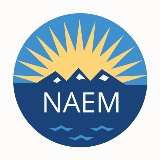How Bentall Kennedy is Engaging Employees to Deliver Client Value

GT: Why is employee engagement a priority for Bentall Kennedy?
JG-D: We have more than 1,000 employees, and actually 94 percent of them believe that sustainability is in the clients' best interest and is also aligned to their personal values. The challenge is making sure people are aware on a daily, monthly, or annual basis of how can they improve, and what is happening elsewhere in an organization that is quite geologically disbursed. (We have offices in Montreal, Ottawa, Toronto, Vancouver, Calgary, Washington, DC and California.) What we recognized is that people care about that which seems to drive positive results for our investors, but we reached a point where we needed a more systematic approach to this. There are many different aspects of employee engagement: Are people properly trained? Are they motivated? Do they have the right framework?
GT: I understand that you recently used the Network for Business Sustainability's new employee engagement assessment to better understand your internal culture. How did the tool work? And what did you learn?
JG-D: There were two main steps. The first was for the research team to review all the publicly available documents and internal documents so that they could say, 'Here is what you have committed to' or 'Here is what is in your strategy is'. Then they followed that up with an in-depth interview with myself and then 10-15 interviews with people around the organization to get a sense of the different levels of seniority, different levels of the business and different geographies to understand whether they are on the same page. It is on paper, but is anyone actually doing anything about it? We then got a report back that looked at how we scored. So there are roughly 60 different practices and we got a score on 1-4 on each of them, and a bit of justification for why were we at that level. I then shared that with our President and said here is our culture wheel and here are some of the places that may be holding us back and this is what I propose that we do to overcome them.
GT: What are some of the ideas that you plan to implement based on what you learned?
JG-D: One idea we're working on is an innovation funnel. We will have a place where people will submit ideas for pilot programs, and there will be a technical committee of six to eight people across the company who will review them and determine which one is worth the significant investment. The second will be an innovation investment committee made up of two or three senior people who would approve it.
GT: Can you give me an idea of the projects that have come out of the innovation initiative in the past?
JG-D: In one of our office buildings in Ottawa, the building sanitary stack or two that goes through the building developed a leak. The leak was fixed in a traditional manner, but because the stack had reached the end of its natural life cycle, we researched a longer-term solution. So they got a quote that said it would cost more than $1 million dollars to replace all of the stacks in three buildings, which would disrupt a lot of service in those buildings. The property management team was a strong proponent of sustainability, though, so they looked around for a better solution. They researched and located and found a vendor that could do interior pipe plastic coating, where they were able to put a little robot inside the tube and basically do an internal coating with durable plastic for roughly one-tenth the cost. They didn't have to rip out any walls, there was no disruption to the tenants, and it came with a manufacturer's warranty. That has been in that building for about eight months. This is one example of the innovative we like to take to solve problems that at the moment is known by some people but not everyone.
This example also demonstrates one of the main reasons we are interested in employee engagement. Because this manager is very personally motivated and felt it was wrong to throw out all of that stuff out and so he went and took extra steps to solve the problem. That is what we find is the value added of sustainability. People motivated to do more thinking and be more innovative.
Related
Sponsored Content
About the Author

NAEM Staff
The National Association for Environmental, Health and Safety, and Sustainability (EHS&S) Management (NAEM) empowers corporate leaders to advance environmental stewardship, create safe and healthy workplaces and promote global sustainability. As the
leading business community for EHS&S decision-makers, we provide engaging forums, a curated network, peer benchmarking, research insights and tools for solving today’s corporate EHS&S management challenges. Visit us online at naem.org.

